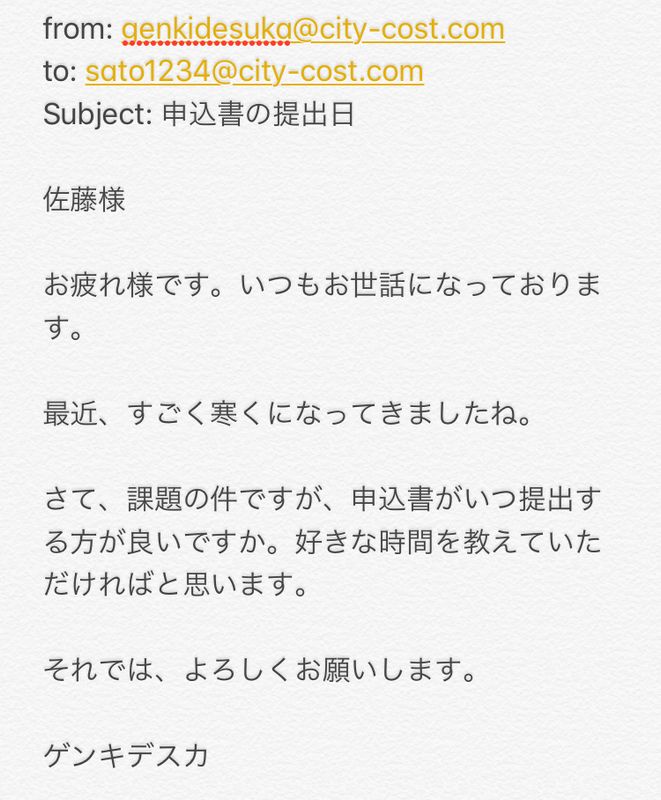Jan 31, 2018
How to Write a Basic Work Email in Japanese
I started out working in Japan with limited Japanese capability. I could order food at a restaurant, talk about the weather, and other daily life Japanese. Entering the workplace, however, I realized just how far I needed to go with my Japanese language ability. Granted, nobody expected me to be fluent, but I didn't want to be that guy who just gave up and didn't put any effort into learning the ropes of how to do things in my new home. Of course, it wasn't easy, because there are so many mundane tasks that we do in our daily lives that you wouldn't realize you'd need to relearn in another language...
...like writing professional emails.
Of course, as with any country, professional emails can run the gamut from quick correspondences between colleagues to formal messages to superiors to outreach emails to potential customers. Obviously, each category has its own set of protocols with the appropriate honorific language and requisite "small talk" content. My goal is not to give you the exhaustive rundown; rather, I want to give you, the reader, the basic structure that will carry you through any email chain you have to engage on while working in Japan. So here we go...

Here is a fake little message that I drafted up for ease of explanation. Allow me to break it down for you:
1) Subject Line: Always be clear on the subject line as to the purpose of your message.
2) The salutation: Whereas many western cultures begin an email with "Hi" or "Dear," there is no need to do so in a Japanese email correspondence. Instead, just write the individual's name, followed by the appropriate honorific. For someone of equal or lesser position, use san, and for someone of higher stature or an individual from outside your organization, use sama. Oh, and no need to put a comma after the salutation (I used to make that mistake all the time).
3) Opening line: For ease of memory, always start an initial email thread with "Otsukaresama desu. Itsumo osewa ni natte orimasu." After the first email, you don't need to use that line.
4) Small Talk: It's always good to put a bit of small talk in the email. The weather is always a safe subject, though you can always personalize it. For example, if you knew the person was going out to a special event or a holiday trip, you could ask them about it, or you could drop a quick question about their family if they are the type to appreciate that.
5) The Purpose of the email: Once you've completed the requisite "small talk" portion, start off the paragraph with "Kadai no ken desu ga," which basically says, "Regarding the subject of this email." After that, just write down what it is you need from the email recipient.
6) Closing: You can sign off any number of ways, but the safest option is simply to say, "Soredewa, yoroshiku onegaishimasu" (or onegai itashimasu) if you need to throw in more honorifics.
7) Signature: It's always helpful to have a signature block with your contact information, but when actually signing off your message, no need for fluff; just put your surname and call it a day.
Do you have any other questions or tips on professional correspondence in Japanese? Feel free to use the comments section below!
Hitting the books once again as a Ph.D. student in Niigata Prefecture. Although I've lived in Japan many years, life as a student in this country is a first.
Blessed Dad. Lucky Husband. Happy Gaijin (most of the time).



1 Comment
edthethe
on Jan 31
Can I click a million times on the helpful button for this one? Emails scare me, so I am always inevitably impolite.